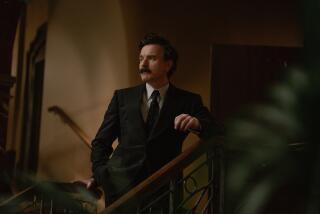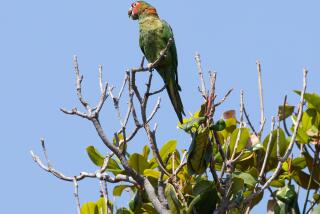Birds of a Feather Flock to Moscow
- Share via
MOSCOW — Here on a Sunday morning, on big Kalitnikovskaya Street, is an ornithological carnival that seems to draw most of Moscow’s 8 million residents, no matter what the weather is like.
Between 6 a.m. and 3 p.m. every Sunday there’s a chance to peek in on one of the few free-enterprise activities in the Soviet Union.
It bears the name Bird Market, but it is more than that because it attracts an eager crowd of pet lovers and curious Muscovites who like to browse through the rows of bird cages, reptile jars, fish tanks, rabbit crates, cartons of kittens and paper sacks full of turtles, titmice and toads.
Always an Event
Covering an area about the size of two football fields a few miles east of the Kremlin, the Bird Market has always been a Moscow event. Even in Anton Chekhov’s time you could buy almost any kind of animal known, from hedgehogs and chipmunks to skylarks and owls. Fascinated by the open-air animal bazaar when it was at Tube Square, Chekhov commented on it in a short story dated 1883:
“It lives its own little life. It twirls and bustles and those business-minded and church-bound people who pass by along the boulevard wonder why such a mass of people has gathered here, what is this bizarre collection of workmen’s hats and peasant caps and society people’s stovepipes, what are all those characters jabbering about and bargaining over?”
Since then the Bird Market has moved several times. Today with a small payment for a license, any Soviet citizen can put pets up for sale.
And not only pets. Every week Russian farmers come in with rabbits caught in the fields and peddle them at dirt-cheap prices.
Nobody has ever bothered to find out if the rabbits are kept as household companions or used to grace a dinner table.
Many Russians belong to clubs that devote a lot of time to tropical fish. The sellers of rare fish breeds do a good business with the home-aquarium crowd. “Look at this ichthyological marvel!” shouts one bespectacled hawker holding up a jar with a minuscule, transparent, bluish fellow swimming around.
On the other side are the songbirds, found in arcades and in cages hung by nails to fences in the shade. Though there are pigeon fanciers galore, much interest is centered around cages where the vendor has bred cursing parrots or canaries with feathers resembling a movie rainbow.
Puppies and kittens don’t sell well in Moscow. Dogs and cats, no matter how cute, eat meat--and meat is not that plentiful much of the time. Besides, with apartments overcrowded and little space left for people, furry quadrupeds would only get in the way. Apparently the only locals who buy canines and felines are farm people.
The Biggest Sales
But the biggest sales are the birds--hence the name for the market. A lot of birds get sold here because little Ivan and little Irina consider it their good deed “to free at least one bird.”
So one is usually bought with a child’s savings, and then amid ceremonial fuss from members of the immediate family the proud tyke liberates a feathered prisoner, usually a homing pigeon.
Nobody dares tell the kid that after the pigeon goes winging off, it makes its way back to the coop of the vendor who sold it; it will be up for sale again next week.
More to Read
Sign up for Essential California
The most important California stories and recommendations in your inbox every morning.
You may occasionally receive promotional content from the Los Angeles Times.










